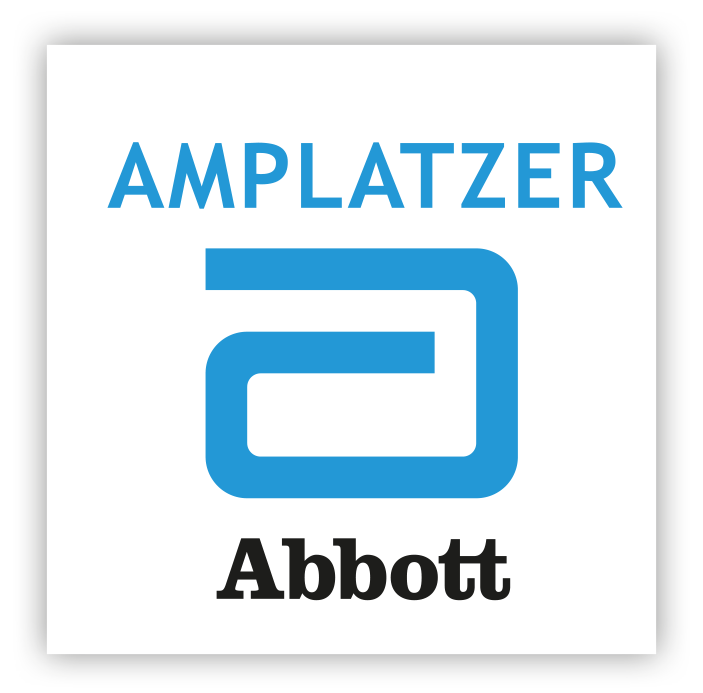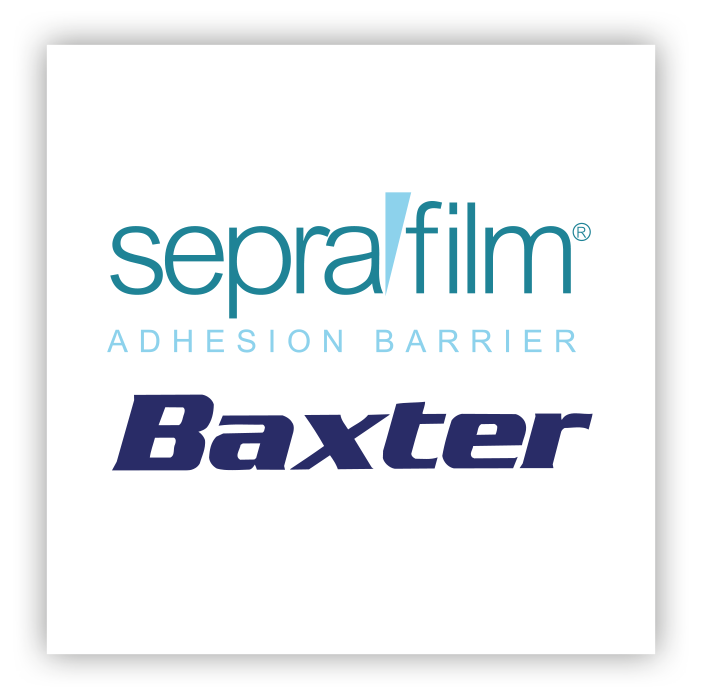Acerca de Seprafilm
Seprafilm is a mechanical bioresorbable adhesion barrier that is applied to adhesiogenic tissues before surgical closure. It is indicated for the reduction in the incidence, extent, and severity of postoperative adhesions in patients undergoing abdominal or pelvic laparotomy.1
Clinical Trial and Patient Experience
Seprafilm has been FDA approved as an adhesion barrier since 1996. To support approval, Seprafilm Adhesion Barrier was studied in five clinical trials involving 2,133 patients.1
More than 4 million patients have received Seprafilm in clinical use worldwide.2

Mode of Action (MOA)
When placed between traumatized tissue surfaces, Seprafilm acts as a physical barrier preventing the formation of adhesions between opposing tissues while the natural process of tissue wound healing takes place. Seprafilm turns into a gel that is reabsorbed into the body.1,3
- Composition: Seprafilm is comprised of two anionic polysaccharides: modified hyaluronic acid (HA) and carboxymethylcellulose (CMC). The polymers in Seprafilm are chemically modified to have reduced water solubility and longer in vivo residence time than the unmodified polymers, thereby enhancing its ability to reduce adhesion formation.3
- Residence time: Seprafilm turns into a gel within 24-48 hours after placement and stays in place for up to seven days—the critical tissue healing period. By day 7, Seprafilm is resorbed from the abdominopelvic cavity and, by day 28, Seprafilm is excreted from the body.1,3
- Characteristics: Seprafilm is sterile, bioresorbable, translucent, and hydrophilic.1
Seprafilm Safety and Efficacy
For detailed Seprafilm efficacy and safety data, click here.
Seprafilm offers an effective and safe method for reducing postsurgical adhesions:
- Indicated for the reduction of the incidence, extent, and severity of adhesions1
- The only FDA-approved adhesion barrier indicated for both abdominal and pelvic laparotomy1
- Safety and efficacy has been established by prospective randomized trials in abdominal and pelvic surgery3,4
The safety and effectiveness of Seprafilm Adhesion Barrier has not been evaluated in clinical studies for the following involving: Patients with frank infections in the abdominopelvic cavity, patients with abdominopelvic malignancy, device placement in locations other than directly beneath an abdominal wall incision following laparotomy, or directly on the uterus following open myomectomy (not laparoscopic), patients with ongoing local and/or systemic inflammatory cell responses, device use in the presence of other implants, e.g. surgical mesh, patients requiring re-operation within 4 weeks of Seprafilm placement – during anticipated time of peak adhesion formation as is associated with natural progression of healing.
Seprafilm Safety and Efficacy
Seprafilm Adhesion Barrier is indicated for use in patients undergoing abdominal or pelvic laparotomy as an adjunct intended to reduce the incidence, extent and severity of postoperative adhesions between the abdominal wall and the under-lying viscera such as omentum, small bowel, bladder, and stomach, and between the uterus and surrounding structures such as tubes and ovaries, large bowel, and bladder.
Important Safety Information
Seprafilm Adhesion Barrier is contraindicated in patients with a history of hypersensitivity to Seprafilm and/or to any component of Seprafilm. Seprafilm Adhesion Barrier is contraindicated for use wrapped directly around a fresh anastomotic suture or staple line; as such use increases the risk of anastomotic leak and related events (fistula, abscess, leak, sepsis, peritonitis). Seprafilm Adhesion Barrier must be used according to the instructions for use. Seprafilm Adhesion Barrier is for single use only, supplied sterile and must not be re-sterilized. Every opened and unused Seprafilm pouch must be discarded. Do not use product if pouch is damaged or opened. The number of sheets used should be just adequate to cover the under surface of the abdominal wall or uterine incision in a single layer.
In patients who have ovarian, primary peritoneal or fallopian tube malignancies, Seprafilm use has been reported to have an increased risk of intra-abdominal fluid collection and/or abscess, particularly when extensive debulking surgery was required.
The safety and effectiveness of Seprafilm Adhesion Barrier has not been evaluated in clinical studies for the following: Patients with frank infections in the abdominopelvic cavity; patients with abdominopelvic malignancy; device placement in locations other than directly beneath an abdominal wall incision following laparotomy, or directly on the uterus following open myomectomy (not laparoscopic); patients with ongoing local and/or systemic inflammatory cell responses; device use in the presence of other implants, e.g. surgical mesh; patients requiring re-operation within four weeks of Seprafilm placement – during anticipated time of peak adhesion formation. Foreign body reactions have occurred with Seprafilm Adhesion Barrier.
The safety and effectiveness of Seprafilm Adhesion Barrier in combination with other adhesion prevention products and/or in other surgical procedures not within the abdominopelvic cavity have not been established in clinical studies.
The safe and effective use of Seprafilm Adhesion Barrier in pregnancy and Cesarean section has not been evaluated. No clinical studies have been conducted in pregnant women or women who have become pregnant within the first month after exposure to Seprafilm Adhesion Barrier. Therefore, this product is not recommended for use during pregnancy and avoidance of conception should be considered during the first complete menstrual cycle after use of Seprafilm Adhesion Barrier.
Long term clinical outcomes such as chronic pain and infertility have not been determined in clinical studies.
View the full Seprafilm Instructions for Use (IFU).
July 2017
References
- Seprafilm® Adhesion Barrier Instructions for Use (IFU); Genzyme Corporation, Cambridge, MA; 2017.
- Data on file. Genzyme Corporation. Cambridge, MA: Genzyme Corp.
- Becker JM, Dayton MT, Fazio VW, et al. Prevention of postoperative abdominal adhesions by a sodium hyaluronate-based bioresorbable membrane: a prospective, randomized, double-blind multicenter study. J Am Coll Surg. 1996;183(4):297-306.
- Beck DE, Cohen Z, Fleshman JW, Kaufman HS, van Goor H, Wolff BG; for Adhesion Study Group Steering Committee. A prospective, randomized, multicenter, controlled study of the safety of Seprafilm® adhesion barrier in abdominopelvic surgery of the intestine. Dis Colon Rectum. 2003;46(10):1310-1319.












